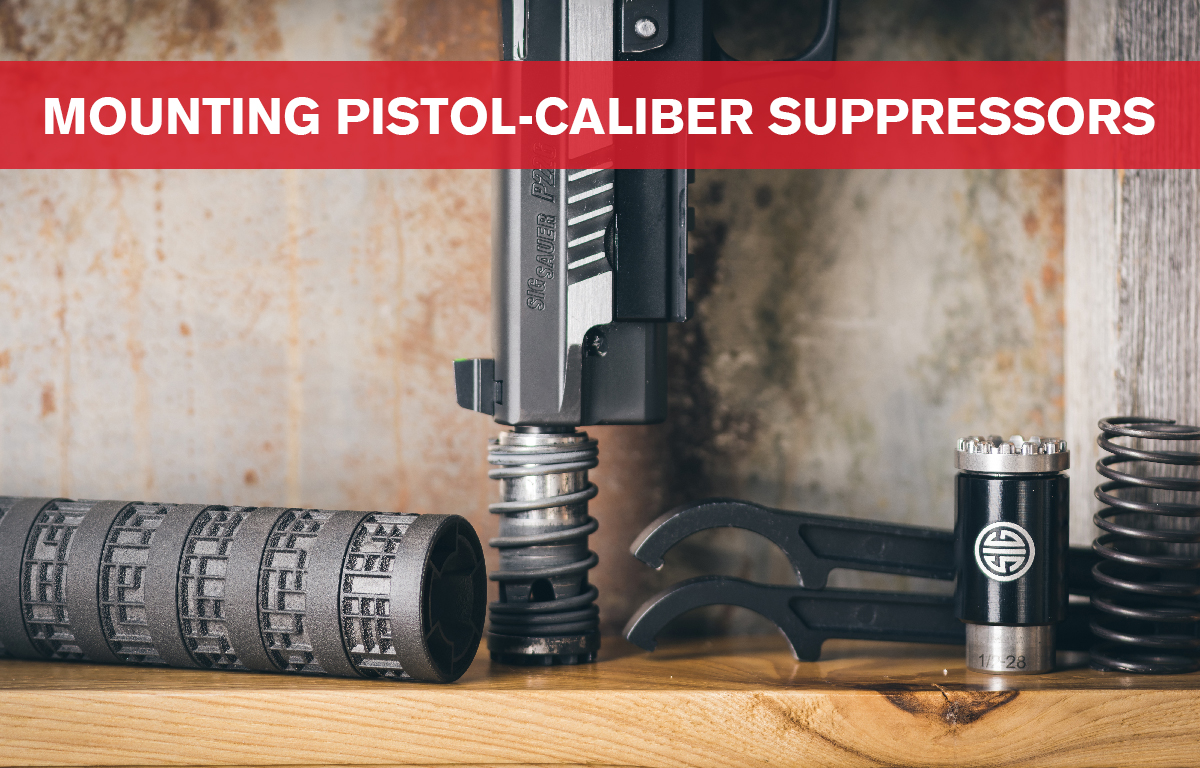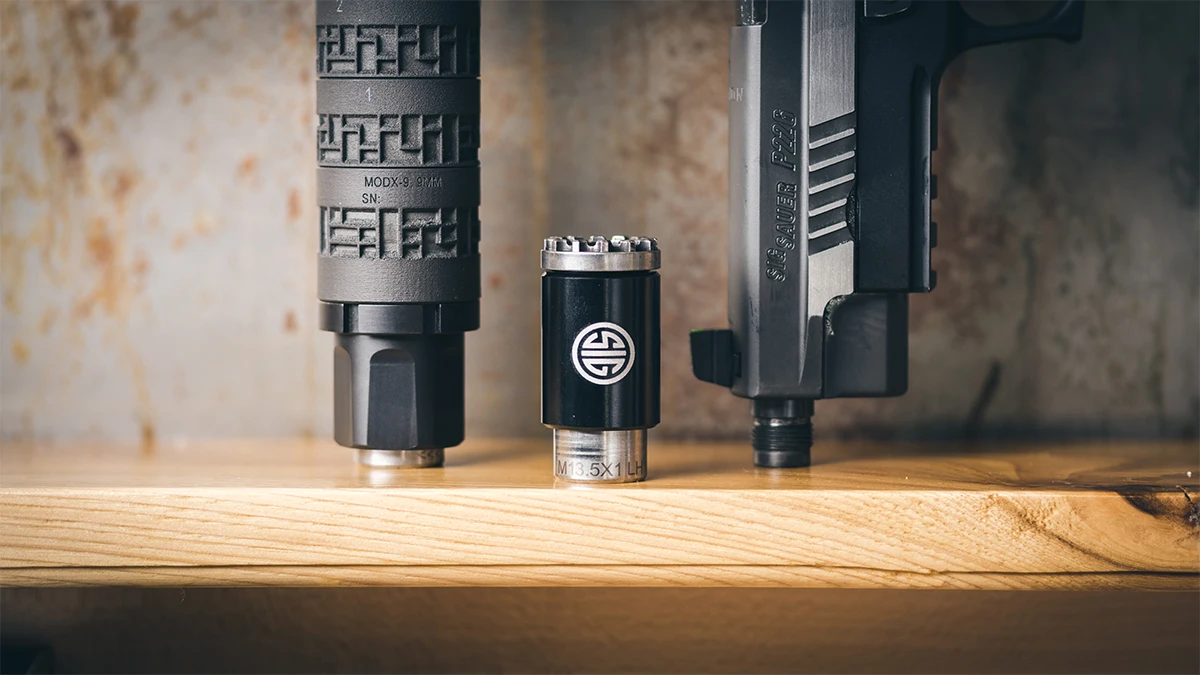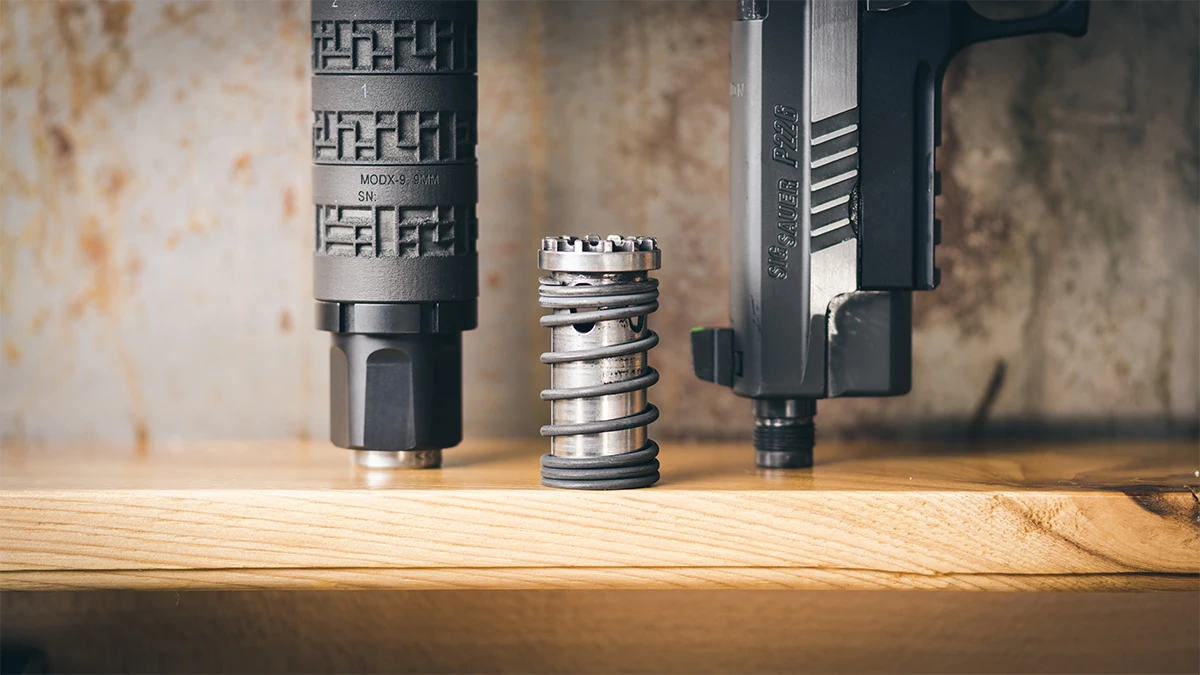

Pistol caliber suppressors are some of our most popular sellers - they’re versatile and incredibly fun no matter what firearm host you’re mounting them onto. The great thing about pistol suppressors is that you have the option of mounting them onto either a rifle or handgun host. In this blog post, we’ll be covering the aspect that sets pistol caliber suppressors apart from every other suppressor category, and that is their ability to be mounted onto a handgun. Get ready to learn about nielsen devices, pistons, fixed barrel spacers, and mounting pistol-caliber suppressors to their handgun hosts.
For the purpose of this article, we’ll be using a Sig Sauer ModX-9 and the fixed barrel spacer and piston it comes with when you buy one; but don’t fret! Other models and brands work the same, so you can apply everything we’re discussing to whatever your setup may be.
Pistol Caliber Suppressor Parts
To get started, let’s first discuss the basic parts of a pistol caliber suppressor. There are three aspects to a pistol suppressor:
- The actual suppressor tube itself, including the internal baffles. This is where the magic happens - the actual suppression of the muzzle blast.
- The recoil booster, or Nielsen Device. This piece is attached to the rear of the suppressor, or the side of the suppressor that connects to the host firearm.
- A piston. The piston is what resides in the recoil booster, and provides the threads that are used to actually attach the suppressor to your host firearm.
As we mentioned earlier, the feature that sets pistol caliber suppressors apart from other caliber suppressors is the fact that they can be used on weapons where the barrel tilts while they are cycling. That tilt locking barrel is why a recoil booster is required on a lot of your well-loved pistols, including Glocks, Springfield XDs, Smith & Wesson M&Ps, Sigs, etc.


Fixed Barrels and Fixed Barrel Spacers
When using pistols with fixed barrels, a recoil booster is not required. Because of this, there are two ways that pistol caliber suppressors can be used on fixed barrels:
- The first way is by using a fixed barrel spacer, which essentially disables the recoil booster. To install it, simply replace the booster spring with the spacer and then re-insert the piston back into the suppressor. Voila!
- Other pistol caliber suppressors are created specifically for fixed barrels, meaning the suppressor does not contain a recoil booster. Suppressors without recoil boosters will not work on tilt locking barrels.


Mounting Pistol Caliber Suppressors
Now that we've covered the basic parts, let's spend a little bit of time on how to mount pistol caliber suppressors to your host firearm. The end of the piston that protrudes from the suppressor has female threads. One variable you’ll run into is the type of thread, which will depend on both the caliber and the firearm being used. For example, a 9mm firearm will typically use either a 1/2x28 thread or a metric 13.5mmx1 LH thread. Because there are different thread patterns, you’ll want to pay attention to your firearm’s thread pattern and get a piston in the suppressor that matches it.
One huge advantage to using pistol caliber suppressors is that you can use one suppressor on multiple firearm hosts as long as you have the proper piston. Swapping out the piston is both easy and fairly inexpensive in order to mount your suppressor to multiple firearms with different threads.
In some cases, you will also have the ability to buy a smaller-sized piston for a larger caliber suppressor, so you’re able to use it on even more caliber options! This makes it possible to thread your .45ACP suppressor directly onto a .40 or 9mm pistol, or to put a 9mm suppressor onto a .223 rifle. The possibilities are truly endless! But always be sure to check that your suppressor is rated for the pressure of the caliber you are trying to suppress.
Firearm Modifications and Threaded Barrels
One of the most important things you’ll need to consider is a threaded barrel. If you’re looking for a handgun, you might be able to purchase one directly from the factory with a threaded barrel already installed. But, if you already have the handgun you’re looking to suppress, it most likely will need a new barrel. In most cases, factory barrels don’t protrude far enough from the frame for it to be modified to be threaded, so it will definitely require a new barrel with those glorious threads.
Round Up
Hopefully now it's clear just how simple mounting pistol-caliber suppressors really is. A pistol suppressor truly is unique because it is the most versatile of all the suppressors in terms of mountability. Because they can be used on both fixed barrels and tilt locking barrels, the options truly are endless.
With just a few extra pieces of hardware, your pistol suppressor can be used on a wide variety of options. Now that you know how easy it is, check out our pistol-caliber suppressors to peruse your options. Always feel free to call us with any questions too.





